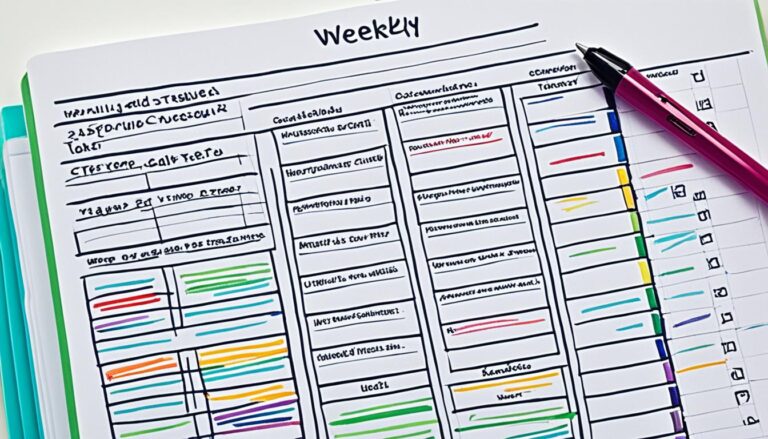Introduction To Time Management
Time management is the cornerstone of success in any endeavor. It’s the art of making the most of your limited hours in a day, ensuring that you’re not just busy, but genuinely productive. In this comprehensive guide, we will unveil the best time management methods that will transform you into a time wizard, capable of achieving more with less effort. These techniques will empower you to harness your time wisely, allowing you to set and accomplish your goals efficiently. Whether you’re a student striving for academic excellence, a professional looking to excel in your career, or someone simply seeking a better work-life balance, mastering time management is the key to unlocking your full potential and living a more fulfilling life.

The Foundations of Time Management
Before diving into specific methods, it’s crucial to understand the foundational principles of effective time management. This section explores the why and how of time management.
Time is the great equalizer; each of us has 24 hours in a day. The difference lies in how we utilize these hours. Effective time management is not about cramming more into your day but about prioritizing what truly matters. It’s about achieving your goals while maintaining balance and reducing stress.
One of the core principles of time management is setting clear objectives. Without knowing where you want to go, you can’t create a roadmap to get there. Defining your goals, whether they are personal or professional, gives you a purpose for managing your time efficiently.
Another vital aspect is identifying time wasters. We all have habits or activities that consume our time without delivering significant results. These could be excessive social media scrolling, disorganized workspaces, or indecisiveness. Recognizing and eliminating these time thieves is essential for effective time management.
Furthermore, it’s crucial to understand that multitasking, often seen as a skill, can be a time management pitfall. Studies have shown that multitasking actually decreases overall productivity and quality of work. Focusing on one task at a time and giving it your full attention is a fundamental time management practice.

The Pomodoro Technique: The Art of Productive Breaks
In this section, we’ll explore the Pomodoro Technique, a time management method that combines work and rest to enhance productivity.
The Essence of Pomodoro
The Pomodoro Technique is a simple yet powerful time management method that revolves around breaking your work into short, focused intervals (typically 25 minutes) called “Pomodoros.” After each Pomodoro, you take a short break of 5 minutes. After completing four Pomodoros, you take a longer break of 15-30 minutes.
This technique leverages the psychological principle of time boxing. It transforms work into a series of manageable sprints, reducing the feeling of overwhelm that can come with long tasks.
How to Implement Pomodoro
To implement the Pomodoro Technique, all you need is a timer or a Pomodoro app. Simply set the timer for 25 minutes and begin your dedicated, focused work. During this time, it’s crucial to eliminate distractions and fully immerse yourself in the task at hand. When the timer rings after the 25-minute interval, take a well-deserved 5-minute break to stretch, relax, or engage in something enjoyable. This brief respite serves to rejuvenate your mind and energy.
After successfully completing four Pomodoros, it’s time for a more extended break, typically lasting 15-30 minutes. This longer break provides you with the opportunity to recharge, reflect on your progress, and plan your next set of Pomodoros. The Pomodoro Technique’s structured approach not only enhances your efficiency but also ensures that you maintain a healthy balance between focused work and necessary breaks to sustain your productivity effectively.
Benefits of Pomodoro
The Pomodoro Technique offers several benefits for time management. It promotes deep work by providing structured time for concentration. It also enhances your awareness of how you spend your time, helping you identify unproductive habits and distractions.
Additionally, Pomodoro fosters a sense of accomplishment. As you complete each Pomodoro, you can see tangible progress. Over time, this builds motivation and a sense of mastery over your tasks.
The Eisenhower Matrix: Prioritizing with Precision
This section explores the Eisenhower Matrix, a time management tool that helps you prioritize tasks based on their urgency and importance.

Understanding the Eisenhower Matrix
Developed by President Dwight D. Eisenhower, this matrix categorizes tasks into four quadrants:
- Urgent and Important: Tasks that demand immediate attention and are crucial to your goals. These should be tackled right away.
- Not Urgent but Important: Tasks that contribute to your long-term goals but don’t require immediate action. Schedule these for later.
- Urgent but Not Important: Tasks that seem pressing but don’t significantly contribute to your goals. Delegate these if possible.
- Not Urgent and Not Important: Tasks that are neither urgent nor important. These are time-wasters and should be minimized.
How to Use the Eisenhower Matrix
Begin by creating a comprehensive list of all your tasks and activities, regardless of their size or complexity. Once you have this list, categorize each item into one of the four quadrants based on its level of urgency and importance. This systematic process offers a clear visual representation of your tasks and helps you pinpoint where to channel your precious time and energy most effectively.
However, the true magic of this method lies in giving priority to tasks that fall into the “Important but Not Urgent” category. These are often the tasks that get overshadowed by urgent matters but have the potential to drive substantial progress toward your long-term objectives. By allocating time and attention to these tasks, you’re investing in your future success and ensuring that you’re not merely reacting to immediate demands but proactively working towards your broader goals.

Eisenhower Matrix: Time And Task Management Journal. Notebook To Prioritize Work Based On Its Urgency.
Benefits of the Eisenhower Matrix
The Eisenhower Matrix is a powerful tool for promoting proactive time management. By sorting tasks into four distinct categories based on their urgency and importance, it empowers you to steer clear of the common trap of constantly reacting to tasks that are urgent but ultimately unimportant. Instead, it encourages you to allocate more of your precious time and energy to activities that genuinely matter. This strategic approach ensures that your daily actions align harmoniously with your larger goals and aspirations.
In essence, the Eisenhower Matrix serves as a guiding compass in your daily decision-making process. It allows you to sift through the noise of busy work and focus on the tasks that hold real significance, enabling you to work towards your long-term objectives with clarity and purpose. By consistently applying this method, you’ll find yourself not only more in control of your time but also more aligned with your larger vision for success.
Time Blocking: Sculpting Your Day with Precision
Time blocking is a method that involves allocating specific time blocks for different tasks. In this section, we’ll delve into this powerful technique.

The Art of Time Blocking
Time blocking is like creating a detailed itinerary for your day. Instead of a to-do list, you designate blocks of time for specific activities. For example, you might allocate 9 AM to 11 AM for focused work, 1 PM to 2 PM for emails, and 3 PM to 4 PM for a team meeting.
Implementing Time Blocking
Embarking on the journey of time blocking begins with the identification of your most crucial tasks for the day. Once you’ve pinpointed these priorities, the next step is to allocate dedicated time blocks to each of them based on their level of importance. It’s paramount to be realistic in estimating the time needed for each task and to account for breaks and buffer time to accommodate unforeseen interruptions. The key to successful time blocking is disciplined adherence to your schedule. Resist the allure of multitasking, and firmly safeguard your blocked time from encroachment by less important or spontaneous tasks.
Maintaining the integrity of your time blocks is pivotal in ensuring that you stay on track and derive the maximum benefit from this technique. By adhering to your designated schedule as closely as possible, you will experience a boost in productivity, a heightened sense of accomplishment, and a newfound mastery over your time and tasks. Time blocking is not just about managing your hours; it’s a methodical approach that empowers you to seize control of your day and harness it for optimal efficiency and effectiveness.
Benefits of Time Blocking
Time blocking offers several advantages. It enhances focus by providing clear boundaries for tasks and reducing distractions. It also helps you allocate sufficient time for deep work, ensuring you make significant progress on important projects.
Moreover, time blocking improves time estimation skills. As you consistently allocate time for tasks, you become better at estimating how long various activities will take. This skill is invaluable for effective time management.

The Time-Block Planner (Second Edition): A Daily Method for Deep Work in a Distracted World
The Two-Minute Rule: Taming Small Tasks
The Two-Minute Rule is a simple yet effective time management technique for handling small tasks promptly.

- The Essence of the Two-Minute Rule: The Two-Minute Rule is straightforward: if a task can be completed in two minutes or less, do it immediately. It’s a strategy for preventing small tasks from accumulating and becoming a source of stress and distraction.
- Implementing the Two-Minute Rule: Start by identifying tasks that fall into the two-minute category. These could include replying to short emails, filing documents, or making quick phone calls. As you encounter these tasks throughout the day, tackle them right away.
- Benefits of the Two-Minute Rule: The Two-Minute Rule has a transformative effect on your daily productivity. By addressing small tasks promptly, you prevent them from piling up and stealing your attention from more substantial projects. This method also clears mental clutter, allowing you to focus on more significant tasks with a sense of accomplishment
The GTD Method: Getting Things Done with Precision
The Getting Things Done (GTD) method, popularized by David Allen, is a comprehensive approach to personal productivity and time management.
Understanding GTD
GTD is a holistic system that helps you capture, clarify, and organize all your tasks and commitments. The core idea is to get everything out of your head and into a trusted system, so your mind is free to focus on the task at hand.
Implementing GTD
GTD involves several key steps:
- Capture: Collect all your tasks, ideas, and commitments into a single inbox.
- Clarify: Process each item to determine its significance and what action is required.
- Organize: Categorize tasks into lists such as “Next Actions,” “Projects,” and “Someday/Maybe.”
- Review: Regularly review and update your lists.
- Engage: Choose tasks to work on based on context and priority.
Benefits of GTD
GTD is known for its effectiveness in managing complex workflows. It brings clarity to your tasks and ensures nothing falls through the cracks. By providing a systematic approach, GTD reduces stress and increases productivity.
Time Management Tools: Enhancing Your Efficiency
In this final section, we explore a selection of time management tools and apps that can streamline your time management efforts.

Calendar Apps
Calendar apps like Google Calendar and Apple Calendar are essential tools for time management. They allow you to schedule appointments, set reminders, and allocate time for tasks. Syncing your calendar across devices ensures you’re always aware of your schedule.
Task Management Apps
Task management apps like Todoist, Trello, and Asana help you organize your tasks, set deadlines, and collaborate with others. These apps provide a visual representation of your workload and enable you to prioritize tasks easily.
Time Tracking Apps
Time-tracking apps such as Toggl and Clockify allow you to monitor how you spend your time. This information is invaluable for identifying productivity bottlenecks and optimizing your daily routine.
Note-taking Apps
Note-taking apps like Evernote and Notion help you capture and organize ideas, meeting notes, and important information. By having a central repository for your notes, you can access critical information quickly.
Automation Tools
Automation tools like Zapier and Microsoft Power Automate can streamline repetitive tasks. By automating routine processes, you free up time for more strategic activities.
Focus and Distraction Blockers
Apps like Focus@Will and Freedom help you stay on track by blocking distracting websites and apps during work hours. These tools are especially useful for maintaining focus during Pomodoro sessions.
Your Time Management Journey Begins
Effective time management is a journey, not a destination. The methods and tools covered in this guide are powerful tools, but their effectiveness depends on your commitment and consistency in applying them.
Choose the methods that resonate most with you and adapt them to your unique needs and preferences. Remember, the goal of time management is not just to be busy but to be productive and purposeful in how you use your time.
By implementing these time management strategies, you’ll find yourself more in control of your day, accomplishing your goals with less stress, and ultimately, living a more fulfilling life.

24 Creative Goals to Spark Creativity
Welcome to a world where creativity knows no bounds. Whether you’re an artist, a writer, a musician, or simply someone who wants to infuse more innovation into your everyday life, setting creative goals can be a game-changer. By defining your aspirations and pursuing them with intention, you can unlock the full potential of your creative […]

14 Inner Goals for a Better Life
Did you know that setting inner goals can unlock your potential and lead to a more fulfilling existence? Focusing on personal aspirations and self-improvement objectives, we tap into our intrinsic motivations and inner ambitions. By setting self-development targets that align with our desires, we can embark on a transformative journey toward our inner purpose and […]

15 best examples of smart goals for athletes
Did you know that athletes who set goals are ten times more likely to succeed in their sports than those who don’t? Goal-setting is a powerful tool that can drive athletes to new heights of performance and accomplishment. Whether you’re an aspiring athlete or a seasoned pro, having clear and meaningful smart goals for athletes […]

23 Realistic Goals and Expectations
Did you know that only 8% of people who set New Year’s resolutions achieve them? That means 92% of individuals feel disappointed and discouraged when their goals fall by the wayside. Setting realistic goals and expectations is integral to our personal and professional lives. Whether aiming for a promotion, improving our health and well-being, or […]

Set Nutrition Smart Goals for Healthy Living
Did you know that only 8% of people achieve their New Year’s dieting objectives and maintain them throughout the year? Making healthy lifestyle resolutions is one thing, but sticking to them and achieving your dietary targets is a different ball game. That’s where nutrition smart goals come into play. By setting specific and attainable wellness […]

20 Weekly Goals Examples to Increase Success
Did you know that setting weekly goals can significantly increase your chances of success? Research shows that individuals who set and achieve weekly goals are 42% more likely to achieve their long-term aspirations than those who only set sporadic goals. Setting new goals can be overwhelming, so setting weekly goals is a more practical approach. […]



